Introduction: The New Era of Immersive Training
Virtual Reality (VR) is transforming how organizations train their workforce. With cutting-edge headsets like Apple Vision Pro and Meta Quest entering the market, immersive training is more accessible and effective than ever. Companies in enterprise, education, and healthcare are exploring VR training to improve engagement, retention, and safety in learning. This article will outline the opportunities these VR platforms provide and how Frame Sixty can help implement effective immersive training solutions.
Traditional Training Challenges in Organizations
Despite ongoing investments in employee and student development, traditional training methods face significant challenges across industries:
- High Costs & Logistics: In-person workshops often require travel, venue costs, and instructor fees, making scaling difficult. Complex training (e.g. machinery operation or medical procedures) can be expensive to set up repeatedly.
- Safety Risks: Training for high-risk jobs (firefighting, surgical procedures, industrial equipment) in real life can pose dangers to trainees or equipment. Mistakes in training can have costly or harmful consequences.
- Low Engagement: Lectures and 2D e-learning modules sometimes fail to engage learners fully. Distracted or passive learners retain less information, leading to poor training outcomes.
- Inconsistent Outcomes: It’s hard to ensure every trainee gets the same quality of experience. Instructor-led sessions can vary, and not everyone gets enough hands-on practice in a classroom setting.
Remote Training Gaps: As workforces and classrooms become more distributed, traditional methods struggle to deliver interactive, collaborative learning experiences for remote participants.
How VR Training Addresses Key Pain Points
Immersive VR training directly tackles these challenges by creating interactive, realistic learning environments:
- Safe, Simulated Environments: VR allows trainees to practice in realistic scenarios without real-world risks. For example, new employees can walk through virtual hazardous situations (like a warehouse emergency or surgical operation) to build skills in a zero-risk setting. This hands-on practice improves confidence and preparedness.
- Higher Engagement & Retention: Learning in VR is active and engaging – users learn by doing. Studies show VR learners can complete training up to 4× faster than classroom learners and still retain more knowledge. For instance, Walmart trained over a million employees in VR and saw a 15% boost in knowledge retention from immersive learning. The interactive nature of VR, with 3D visuals and gamified challenges, keeps learners focused and improves recall.
- Cost Efficiency at Scale: While VR has upfront costs, it can significantly reduce long-term training expenses. Organizations save on travel, repeated equipment setup, and instructor time by using virtual simulations. According to Harvard Business Review, companies can cut training costs by up to 70% with VR programs. Once developed, a VR module can be used to train hundreds of people without additional per-session cost, providing a strong ROI over time.
- Standardized & Measurable Training: Every participant in a VR training module experiences the same scenarios and is evaluated by the same criteria. This consistency ensures uniform skill development across locations. VR platforms also track detailed performance data (e.g. reaction time, decision choices), giving organizations actionable insights and analytics on employee progress.
Remote Collaboration: Modern VR headsets support multi-user experiences, meaning team members across different cities can train together in a shared virtual space. This fosters collaboration and team-building that traditional video calls or LMS modules can’t match. Remote employees or students can engage in group exercises and feel “present” with their peers and instructors via avatars and voice chat in VR.
VR Training in the Enterprise Sector: Safer, Smarter Employee Development
Enterprise companies are early adopters of VR training to address various corporate learning needs and improve workforce performance:
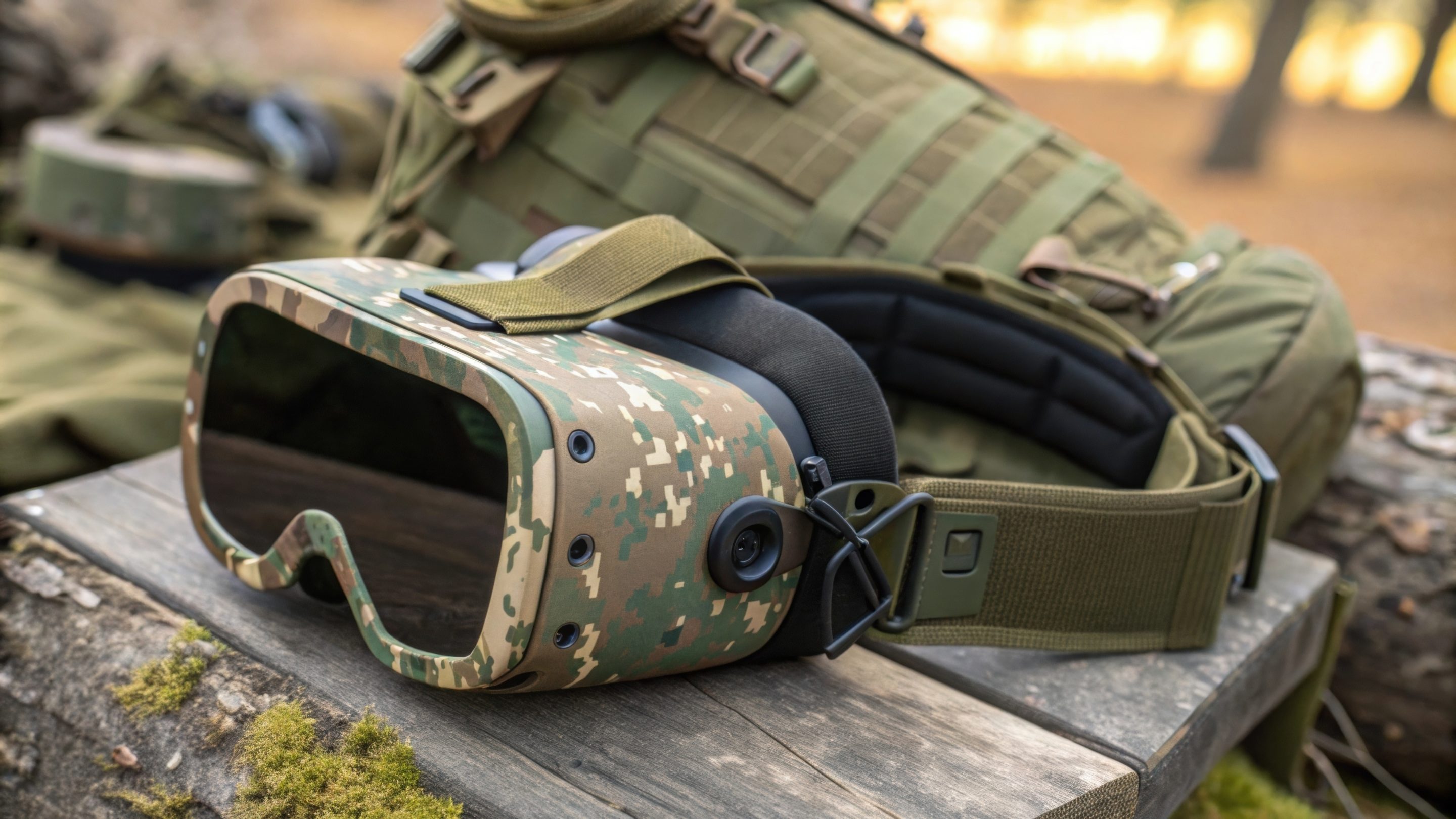
Enhancing Safety and Technical Skills (Manufacturing, Engineering, Field Work)
In industries like manufacturing, energy, or construction, VR offers a safe way to train employees on dangerous tasks and complex equipment. Safety drills and equipment operation can be practiced in a virtual plant or job site, where mistakes don’t cause real harm. Trainees learn proper protocols for emergencies, machinery handling, or hazardous material cleanup through repeated simulation. They can virtually experience scenarios like factory fires or high-voltage repairs, drilling the correct responses until mastery. This not only prevents accidents but also reduces downtime and damage to real equipment during training.
Onboarding and Soft Skills Development
Corporations are also using VR to improve onboarding and soft skills training for new hires and leaders. New employees can tour virtual office environments, learn company procedures, and even simulate day-in-the-life scenarios to get up to speed faster. For customer-facing roles, VR can simulate challenging client interactions or public speaking situations. For example, Verizon partnered with a VR platform to train call center staff on handling difficult customer conversations in a realistic virtual setting. Employees practice communication and problem-solving in a safe space, building empathy and confidence. Such immersive role-play leads to more confident, prepared staff when real customer issues arise.
Remote Collaboration and Management Training
Global enterprises often need to train teams that are spread out geographically. VR provides a unique solution: co-workers can join the same virtual training room from anywhere in the world. Whether it’s a leadership development workshop or a project simulation, participants interact with each other as avatars, engaging in team problem-solving tasks or virtual meetings. This kind of experiential learning is particularly effective for management and leadership training — for instance, simulating tough decision-making scenarios or coaching conversations with virtual employees. Teams not only learn the content but also practice collaborating virtually, a useful skill in itself in today’s remote/hybrid work environment.
VR Training in Education: Immersive Learning Experiences for Students
Educators and academic institutions are leveraging VR to enrich learning and address long-standing pain points in teaching:
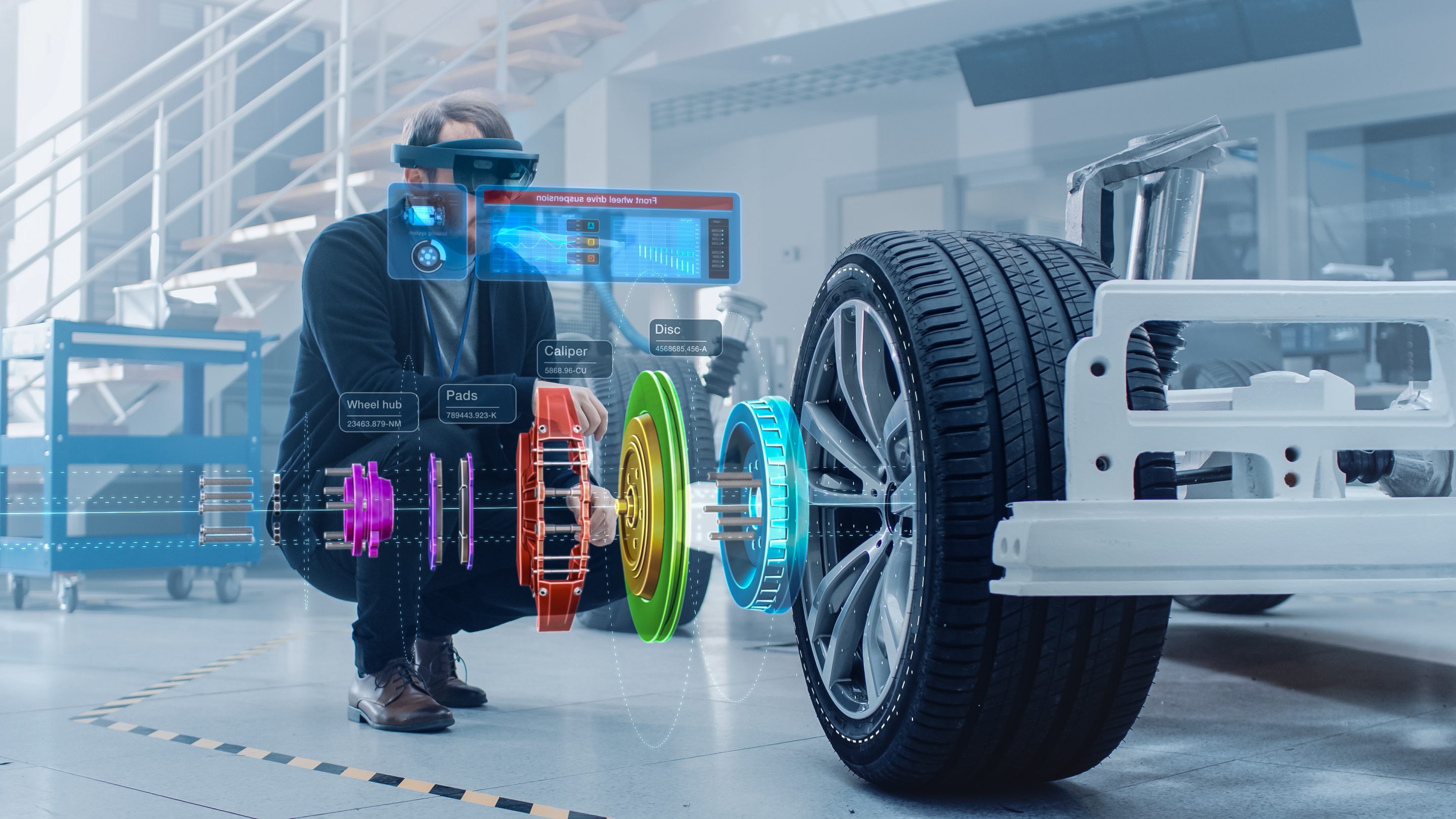
Virtual Field Trips and Interactive Labs
VR can transport students to places and times they could otherwise only read about. With a headset, a history class can visit ancient Rome and witness historical events, or a science class can explore the inside of a human cell in 3D. These virtual field trips make learning thrilling and memorable. In science and technical education, VR laboratories allow students to perform experiments and practice skills that might be too costly or dangerous in real life. For example, chemistry students can safely mix chemicals in a virtual lab, or astronomy students can manipulate a virtual solar system. This hands-on exploration deepens understanding by letting learners experience concepts instead of just reading about them.
Increased Engagement and Accessibility
Immersive content can grab students’ attention far better than slides or textbooks. Complex subjects become visual and interactive in VR, which helps students grasp difficult concepts. This is especially powerful for abstract topics (like mathematics visualizations or physics simulations) and for vocational training (like virtual automotive repair for trade students). VR also improves accessibility: students who can’t take part in physical field trips or labs (due to location or disabilities) can still experience them virtually. Additionally, VR training modules can be replayed and self-paced, so learners who need more time or practice can revisit the material until they achieve competency. Schools and universities adopting VR have noted higher class participation and enthusiasm when lessons are immersive, translating to better learning outcomes.
Personalized and Collaborative Learning
Through VR, education can be more personalized. Software can adjust the difficulty of simulations based on a student’s progress, or offer immediate feedback and hints during training exercises. For example, in a virtual language learning scenario, if a student struggles with a phrase, the program can repeat or provide visual cues, tailoring the experience to the learner’s needs. At the same time, VR enables collaborative learning; students from different locations can meet in a virtual classroom to work on group projects or practice skills together (imagine medical students from around the world practicing a procedure in the same virtual operating room). This combination of personalization and social learning ensures that each student remains challenged but not overwhelmed, and benefits from peer interaction.
VR Training in Healthcare: Revolutionizing Medical Training and Patient Care
Healthcare organizations and medical schools are embracing VR to train clinicians in ways never before possible, ultimately improving patient care:
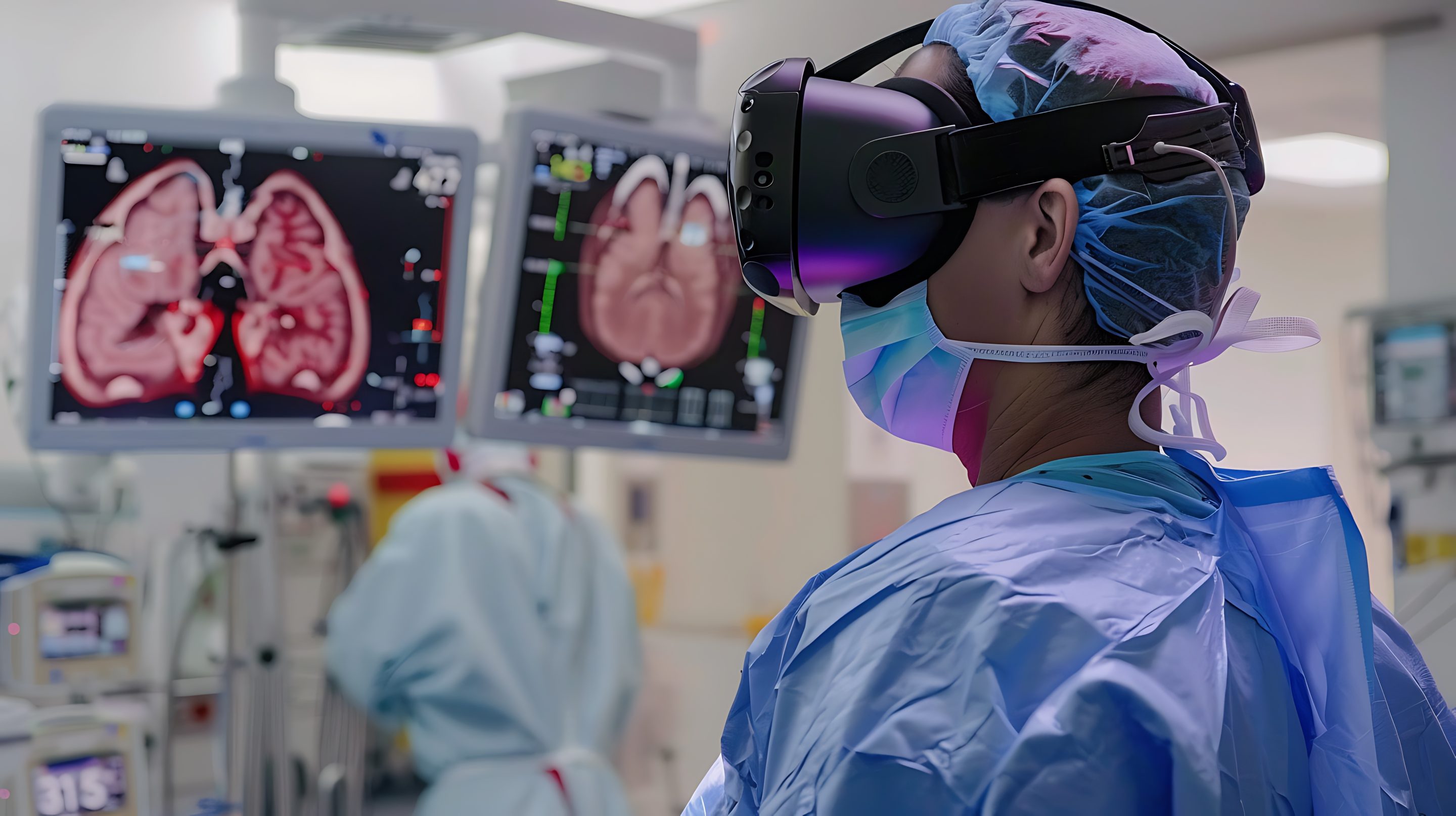
Surgical Simulations and Clinical Procedure Training
One of the most impactful uses of VR in healthcare is surgical training. With VR, surgeons and medical students can practice complex procedures in a lifelike virtual operating room. They can visualize 3D anatomy, use virtual instruments, and go through entire operations step by step. This kind of practice dramatically improves proficiency without putting any patients at risk. In fact, one hospital found that introducing VR for surgical training led to a 100% improvement in proficiency rates among new surgeons.
From routine procedures to rare, high-risk surgeries, VR simulations allow unlimited rehearsal, which builds muscle memory and confidence. Beyond surgery, other clinical skills benefit too – for example, nurses practicing IV insertions or emergency responders running through ambulance scenarios – all in a safe virtual setting.
Patient Interaction, Diagnosis and Empathy Training
Healthcare isn’t only about technical skills; communication and decision-making are critical. VR training helps here as well. Doctors and nurses can engage in virtual patient interaction scenarios to improve their bedside manner, diagnosis skills, and empathy. For instance, a VR program might simulate a patient consultation where the trainee must ask the right questions and make decisions, or even let a provider experience the perspective of a patient (to feel what it’s like to have a certain condition, improving empathy). Medical schools have used VR to expose students to difficult conversations with virtual patients or family members – such as delivering bad news or calming an anxious patient – allowing them to refine their approach in a no-consequence environment. In addition, VR can be used for diagnostic training by simulating symptoms and cases that a clinician must evaluate, honing their critical thinking and clinical reasoning in a realistic way.
Continued Education and Skills Refreshers
Medicine is an ever-evolving field, and healthcare professionals must continuously learn new techniques and stay updated. VR platforms offer an on-demand way for professionals to update their skills or complete annual competencies. Hospitals can have VR modules for things like CPR refreshers, new medical device training, or pandemic response protocols, ensuring staff remain prepared. Because VR training is standardized, every practitioner can meet the same high bar of competency. And since it’s available anytime, staff can train during breaks or slower periods without needing an instructor on-site. This flexibility and consistency mean healthcare institutions can maintain a highly skilled workforce ready for the latest challenges.
Apple Vision Pro: A New Frontier for Enterprise Training
Apple’s Vision Pro headset is a mixed reality device that blends virtual content with the real world, opening exciting possibilities for training programs:
Mixed Reality for Contextual Learning
With Vision Pro’s advanced passthrough cameras and sensors, trainees can see their real environment while interacting with virtual elements. This means training can be contextually anchored in the actual workspace. For example, a maintenance technician wearing Vision Pro might see virtual arrows and instructions overlaid onto the real machine in front of them, guiding them through a repair procedure step by step. Or a medical trainee could see a 3D anatomy hologram aligned with a physical mannequin, combining tactile feedback with visual guidance. This merging of real and virtual creates highly contextual learning experiences — users practice tasks in the same physical space where they will perform them, enhancing transfer of skills to the job. Vision Pro’s precise spatial tracking ensures digital overlays stay anchored to real-world objects, enabling these powerful training scenarios.
High-Fidelity Immersion and Natural Interaction
The Apple Vision Pro is at the premium end of AR/VR technology, boasting ultra-high resolution displays, eye-tracking, hand-tracking, and spatial audio. For training, this means crystal-clear visuals (text and intricate details are easily readable, which is crucial for things like medical imagery or technical schematics) and realistic sound environments that boost immersion. Importantly, Vision Pro users interact with content via natural gestures, eye movements, and voice commands – no need for handheld controllers. This intuitive interaction is beneficial in training: a surgeon can use natural hand motions to practice a procedure, or a trainee can simply glance at an item to select it, as they would in real life. Such realism and ease of use reduce the learning curve for using the device itself, so users can focus on the training content. The richer sensory experience can lead to even better engagement and retention of knowledge.
Enterprise Integration and Security
Apple’s ecosystem strengths make Vision Pro appealing for enterprise and healthcare adoption. The device runs on visionOS and integrates with iOS apps and services, meaning organizations can connect training content with their existing Apple infrastructure (for instance, pulling in data from an iPad training app, or integrating with Apple’s development tools for custom apps). Apple is also emphasizing privacy and security – features like Optic ID (iris recognition) ensure that only authorized users access certain training programs or sensitive data, an important consideration for corporate or medical training where compliance is key
While Vision Pro is a new and high-end device, its controlled, secure environment and Apple’s support make it a strong platform for mission-critical training applications. Early-adopter companies in fields like aerospace, healthcare, and advanced manufacturing are exploring Vision Pro to deliver training that requires the ultimate fidelity and real-world integration.
Cutting-Edge Use Cases (Holographic Collaboration and Data Visualization)
Looking ahead, Vision Pro could enable scenarios like holographic collaboration – imagine multiple trainees and instructors in different locations all seeing the same life-sized 3D model in their room and interacting with it together. For example, an educational seminar where medical students globally examine a virtual cadaver as if it were in front of each of them, discussing and learning in real time. Similarly, data visualization training can be enhanced: business analysts could walk through a virtual 3D data dashboard floating in their office, learning to derive insights with interactive charts around them. These emerging use cases show how Apple’s device can push the boundaries of training beyond what’s possible even in standard VR, by blending real and virtual in meaningful ways.
Meta Quest: Scalable VR Training for Every Organization
Meta’s Quest headsets (like the popular Quest 2 and newer Quest 3) are widely used in VR training deployments due to their balance of affordability and capability:
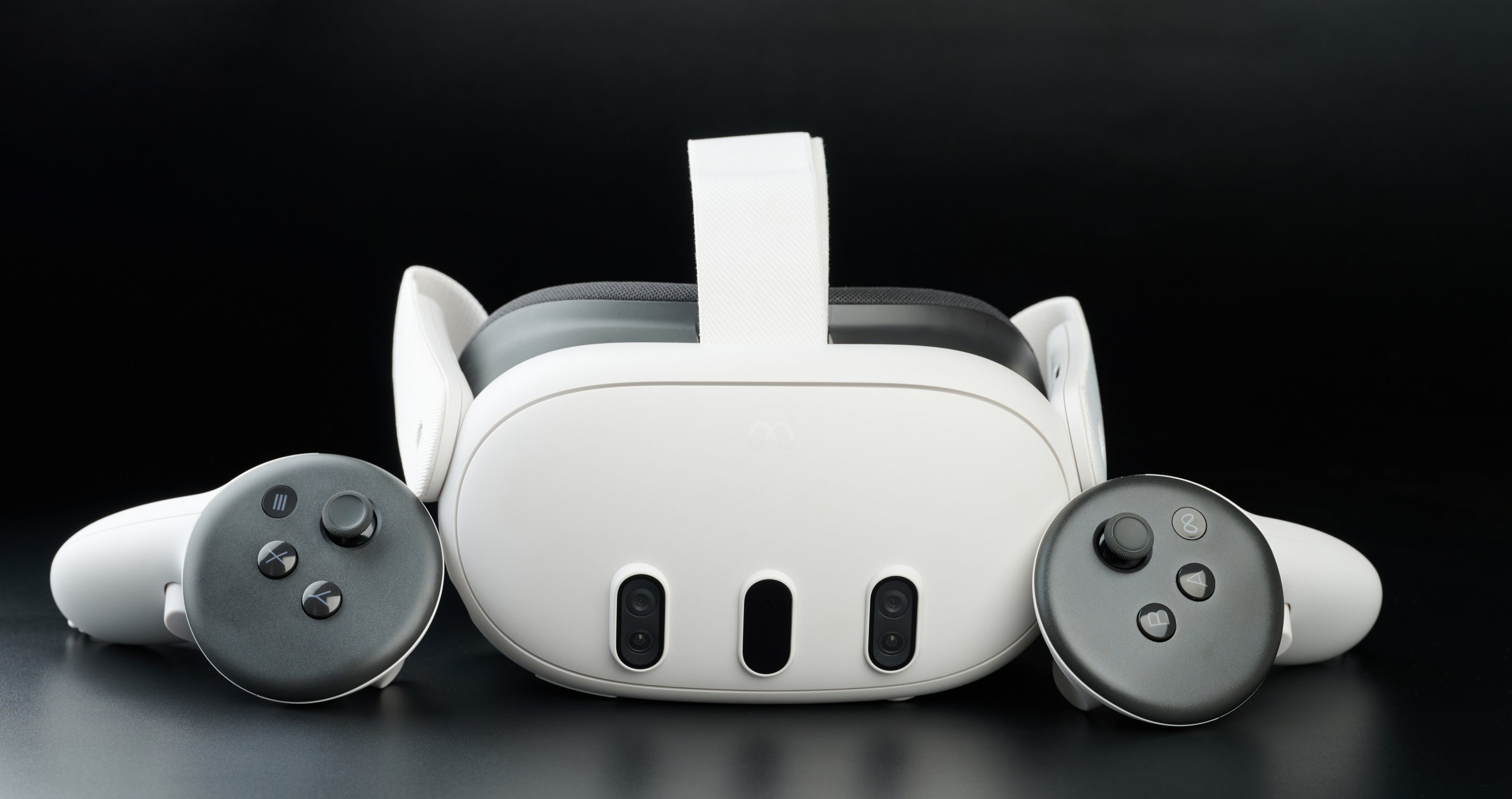
Accessible, Affordable, and Wireless
The Meta Quest is an all-in-one, wireless VR headset with a relatively low price point, which makes it practical to buy and deploy at scale. Businesses and schools can purchase dozens or hundreds of Quest units without breaking the budget, immediately equipping large groups of learners. The wireless design means trainees can move freely without being tethered to a computer, making simulations like walking through a virtual factory or emergency scene very natural. Setup is straightforward, so new users can be onboarded quickly. This accessibility has allowed companies of all sizes to pilot VR training programs. For example, many retail and hospitality businesses have used Quest to train staff in customer service and safety procedures because they can roll out headsets to every store location easily. The lower cost per device also means if an organization wants to set up a dedicated VR lab or lend headsets to remote learners, it’s financially feasible.
Rich Content Ecosystem and Tools
One of Quest’s strengths is the vast ecosystem of VR content and development tools available. The Quest supports apps from the Meta Quest Store, which includes not only games but a growing number of educational and training applications. Companies can find off-the-shelf soft skills trainers, virtual safety courses, and more. Moreover, developers worldwide are familiar with building for Quest using engines like Unity and Unreal, which means creating custom training content for Quest is relatively fast and well-supported. The Quest also offers compatibility with PC-based VR content and platforms (e.g., integration with SteamVR for even more experiences. For enterprises, Meta has a platform called Quest for Business that provides device management, secure app distribution, and user management features — important for deploying headsets in a corporate or school environment. This robust ecosystem ensures that an organization choosing Quest is not starting from scratch; they can leverage existing VR training modules and a community of developers, often accelerating the implementation timeline.
Multi-User Collaboration and Proven Impact
The Quest supports multi-user VR experiences, enabling group training sessions that simulate real-world team interactions. Trainees can enter the same virtual environment to role-play scenarios together — for example, an emergency response drill where each person has a role, or a sales training where one plays the client and another the salesperson in VR. This collaborative capability is powerful for soft skills and teamwork training. Many large organizations have already proven the value of Quest-based training. Walmart, for instance, famously used VR (via Oculus, the predecessor to Quest) to train over 1 million employees in customer service and store operations, resulting in measurable performance improvements and higher test scores on those tasks.
Other companies like Verizon, Boeing, and UPS have reported faster training times and fewer errors after implementing Quest VR training for tasks ranging from retail customer interactions to aircraft maintenance. The track record of success with Quest makes it a trusted choice for any organization venturing into VR training — you can be confident that the hardware and content can deliver real results.
Best Practices for Implementing VR Training Programs
Adopting VR training is an exciting step, but success requires careful planning and execution. Here are key best practices and considerations for organizations in enterprise, education, or healthcare looking to roll out VR training:
- Start with Clear Objectives: Identify specific training challenges or goals that VR will address. Whether it’s reducing onboarding time, improving safety compliance, or increasing exam pass rates, define what success looks like. Set Key Performance Indicators (KPIs) (e.g. score improvements, reduced errors, time saved) to measure the program’s impact.
- Pilot Before Scaling: Begin with a pilot program on a small scale. Choose one or two training modules to develop in VR and trial them with a select group of users. Gather feedback on the user experience, learning outcomes, and technical performance. This phased approach allows you to refine content and logistics (or prove ROI) before investing in a company-wide launch.
- Ensure User Comfort and Accessibility: VR is a new medium for many, so design training modules to be user-friendly. Keep sessions at a reasonable length (10-20 minutes at a time) to avoid fatigue or motion sickness. Provide a brief orientation for first-time users on how to use the headset and controls. Also consider accessibility — for example, have options for those who wear glasses or need subtitles for audio instructions. A comfortable trainee is more focused and learns better.
- Content is King: High-quality, relevant content determines the effectiveness of VR training. Work with professional VR developers (like Frame Sixty) and subject matter experts to create realistic and pedagogically sound scenarios. Incorporate storytelling and interactivity to make lessons memorable. Also, update the content as procedures or standards change, so your training stays up-to-date.
- Integrate with Existing Learning Systems: Treat VR training as part of the overall learning & development or curriculum strategy, not a standalone novelty. Integrate VR modules with your Learning Management System (LMS) or training platform so that completion data and scores are recorded alongside other training records. This allows tracking progress over time and across different training methods. Many VR training solutions can report data (such as assessment results) that you can import into an LMS or HR system for a unified view of employee/student development.
- Plan for Logistics and Scale: When rolling out multiple headsets, have a plan for device management. Decide how headsets will be shared or assigned, who will charge and update them, and how often. Use management tools (like Meta’s device manager or Apple’s enterprise device management) to push content updates and maintain security. It’s also wise to prepare a physical space for VR training – a safe, clear area for users to move in. As you scale up, ensure you have enough IT support or training facilitators to assist users and maintain the equipment.
Gather Feedback and Iterate: After each VR training session, collect feedback from participants and instructors. What did they find valuable? Were there any technical issues or confusing parts? Use surveys or debrief sessions to gather insights. VR training is still new, so continuous improvement is key. Update the training modules and processes based on this feedback to enhance effectiveness over time. Keep stakeholders informed of successes (e.g., share data like improvements in retention or reduced incidents after VR training, possibly referencing those strong ROI metrics to justify further investment).
Why Partner with Frame Sixty for VR Training Development
Implementing a successful VR training initiative often requires expertise in both the technology and the learning design. Frame Sixty is a capable, innovative partner for organizations looking to develop and deploy immersive training solutions:
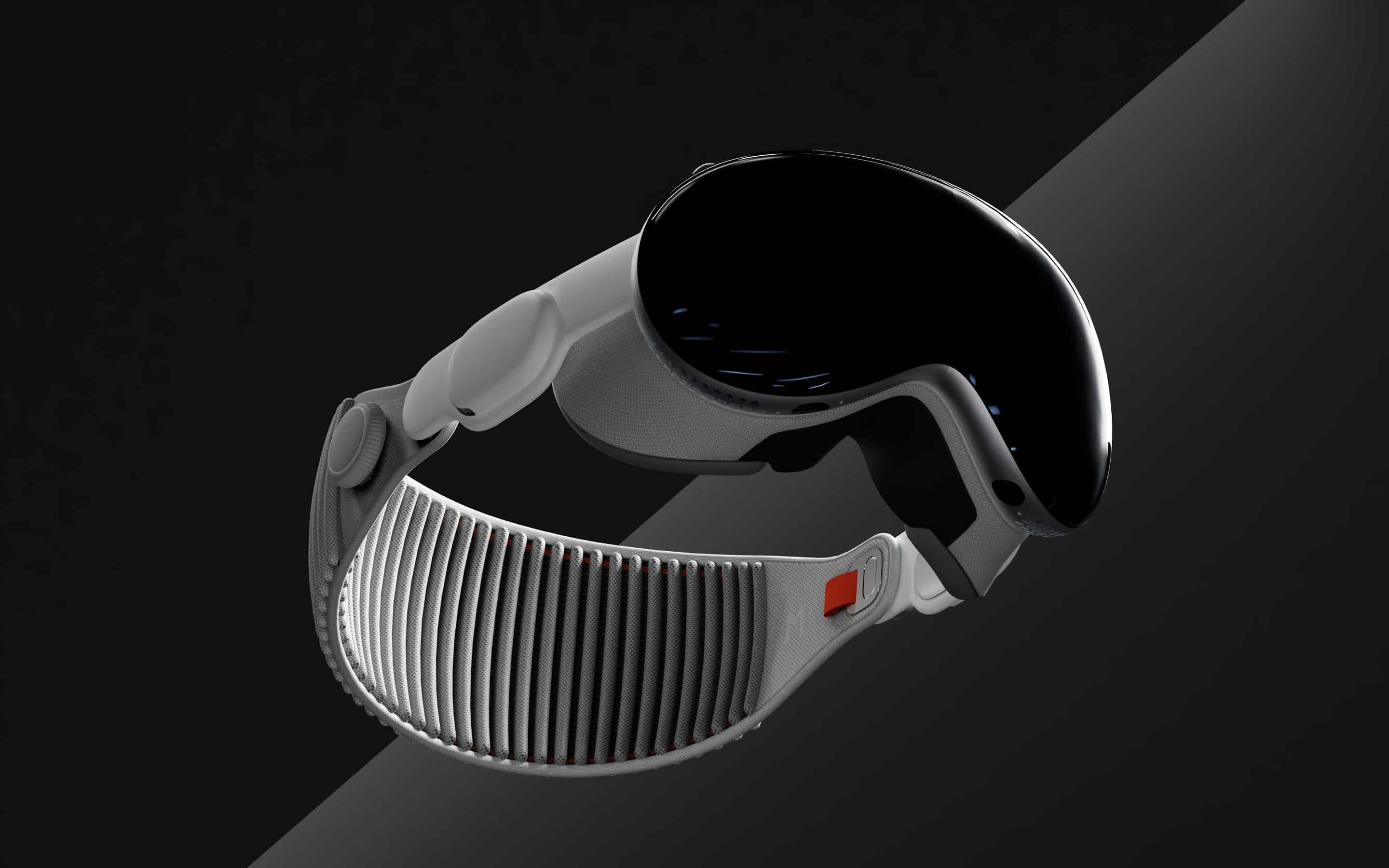
Deep AR/VR Expertise and Innovation
Frame Sixty is a team of senior developers with over 20 years of collective experience in cutting-edge technologies, including VR and augmented reality.
The company has been an early adopter in the immersive tech space, even holding multiple patents in XR (extended reality) for their unique innovations.
This deep know-how means Frame Sixty can handle complex VR training projects and utilize the latest industry best practices. Notably, Frame Sixty specializes in building apps for Apple Vision Pro and Meta Quest platforms giving them first-hand insight into optimizing training applications for these devices. By partnering with experts who understand the nuances of spatial computing, hand tracking, and 3D interaction, you ensure your training content will be top-tier and future-proof.
Cross-Industry Experience in Enterprise, Education, and Healthcare
Having worked on a variety of projects, Frame Sixty brings cross-industry perspective to VR development. Whether it’s a corporate safety training simulation, an educational VR app, or a medical training tool, their team knows how to tailor solutions to different audiences. They understand the compliance requirements and pedagogical approaches unique to each sector (for example, HIPAA considerations in healthcare simulations, or curriculum alignment in educational content). This means Frame Sixty can speak your language and design VR experiences that align with your industry’s needs and standards. Their diverse portfolio of apps (100+ launched products) showcases an ability to deliver results for startups and Fortune 500 companies alike.
End-to-End Development & Support
When you engage Frame Sixty, you get a partner for the entire journey of VR training implementation. They offer end-to-end development services – from initial concept and UX/UI design, through 3D modeling and software development, to testing and deployment. The team pays special attention to user experience, ensuring the app is intuitive for your trainees and meets your learning objectives. Frame Sixty also assists with technical setup, such as configuring Vision Pro or Quest devices and integrating the software with your systems. After launch, they provide ongoing support and maintenance, helping update content or features as your needs evolve. This cradle-to-grave support model means you won’t be left on your own to figure out technical issues – the creators of your VR training are there to ensure its long-term success.
Collaborative, Client-Focused Approach
Frame Sixty prides itself on working closely with clients. They involve your stakeholders (trainers, subject experts, IT department) at each stage to make sure the VR solution truly addresses your pain points. Through regular demos and feedback rounds, you get to see the virtual training environment take shape and can suggest adjustments. This collaborative development style leads to a final product that fits seamlessly into your organization’s culture and workflow. Frame Sixty’s team also helps train your trainers or admins on using the new VR tools, so you have in-house champions to drive adoption.
Commitment to Innovation and Future-Readiness
The tech world of VR and AR is evolving rapidly. Frame Sixty stays at the forefront of these trends – whether it’s the latest Vision Pro capabilities, updates in Unity development, or new interaction paradigms – and incorporates them into their projects. By partnering with an innovative VR developer, you benefit from solutions that won’t feel outdated in a year. Frame Sixty can advise on emerging hardware (like newer headset models) and software improvements, ensuring your VR training program can expand and adapt over time. This future-ready mindset means your investment in VR today will continue to pay off as technology advances.
Next Steps to Launch Your Immersive Training Program
Ready to explore VR training for your organization? Here are actionable next steps to get started on this innovative journey:
- Identify a Pilot Project: Choose a training topic or challenge that could greatly benefit from immersion. Start with something impactful but manageable – for example, a safety drill, a sales pitch simulation, or a clinical procedure training that is hard to practice in real life.
- Build the Business Case: Gather internal buy-in by highlighting the potential ROI. Use data from other companies (like the statistics in this outline) to show how VR can improve performance and reduce costs. Outline what success will look like for your pilot in terms of measurable outcomes (e.g., reduce training time by 30%, improve test scores by 20%, etc.).
- Consult with VR Experts: Reach out to a specialized VR development partner like Frame Sixty. Discuss your training needs, goals, and concerns. A good partner will offer insight into the best hardware (Apple Vision Pro vs. Meta Quest or a combination) for your use case and propose a development plan. Frame Sixty, for instance, can provide a free initial consultation or code review of your idea to help scope the project.
- Plan Content and Integration: Work with the developers and your internal subject matter experts to storyboard the VR training scenario. Determine how it will integrate with your current training materials or IT systems. Ensure you also plan the logistics (number of headsets needed, space for use, IT support).
- Develop, Test, Iterate: Proceed with development of the VR training module, then test it with a small user group. Collect feedback and iterate as needed. Pay attention to user comfort and any technical issues, adjusting content or setup accordingly.
- Launch and Monitor: Roll out the VR training to your wider audience. Monitor the results closely – track those KPIs (like assessment scores, incident rates, user feedback). Use this data to gauge the program’s success and identify areas for expansion or improvement.
- Scale Up: If the pilot is successful, plan for scaling the VR training to additional departments, locations, or for new topics. Leverage what you learned to streamline headset deployment and content creation for future modules. Continue partnering with Frame Sixty or your VR team to develop new training experiences as needs arise.
By following these steps, your organization can methodically adopt VR training and maximize its benefits, ensuring a smooth transition into immersive learning.
Conclusion: The Future of Training is Immersive — Let’s Build It Together
VR training isn’t just a trend — it’s a proven, scalable solution that’s transforming how organizations onboard, upskill, and empower their teams. Whether you’re in enterprise, education, or healthcare, the combination of Apple Vision Pro, Meta Quest, and a strategic development partner like Frame Sixty can help you deliver high-impact training that’s immersive, measurable, and future-ready.
If you’re ready to explore what VR training can do for your organization — we’d love to talk.
? Start the conversation today: https://framesixty.com/contact/
FAQs
As organizations evaluate immersive learning technologies, questions naturally arise around implementation, effectiveness, and scalability. Below, we’ve addressed the most frequently asked questions to help you better understand how VR training with Apple Vision Pro can align with your goals.
Is Apple Vision Pro good for remote training?
Yes! Vision Pro supports spatial collaboration. Teams across locations can learn together in a shared virtual space.
What industries are using Apple Vision Pro for training today?
Early adopters include aerospace, medicine, and advanced manufacturing — sectors that need ultra-realistic simulations with real-world overlays.
Who is VR training best suited for?
It’s ideal for industries that involve technical skills, safety procedures, or soft-skills like communication. That includes enterprise teams, educators, and healthcare providers.
Does VR training replace traditional training methods?
Not necessarily. It complements traditional training and dramatically enhances outcomes by adding realism, repetition, and interactivity.
What’s the ROI of investing in VR training?
Studies show VR training can boost knowledge retention by 75%, reduce onboarding time by 40%, and cut training costs by up to 60% when scaled.
Can I build a custom VR app for Meta Quest?
Absolutely. Frame Sixty specializes in building custom Quest training apps tailored to your workflow and outcomes.
Is Meta Quest secure enough for enterprise use?
Yes. Meta offers “Quest for Business” with device management, user controls, and secure app distribution options.
What if my team has never used VR before?
No problem. Meta Quest is wireless, intuitive, and beginner-friendly. Most users are comfortable within minutes.

